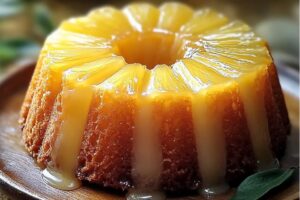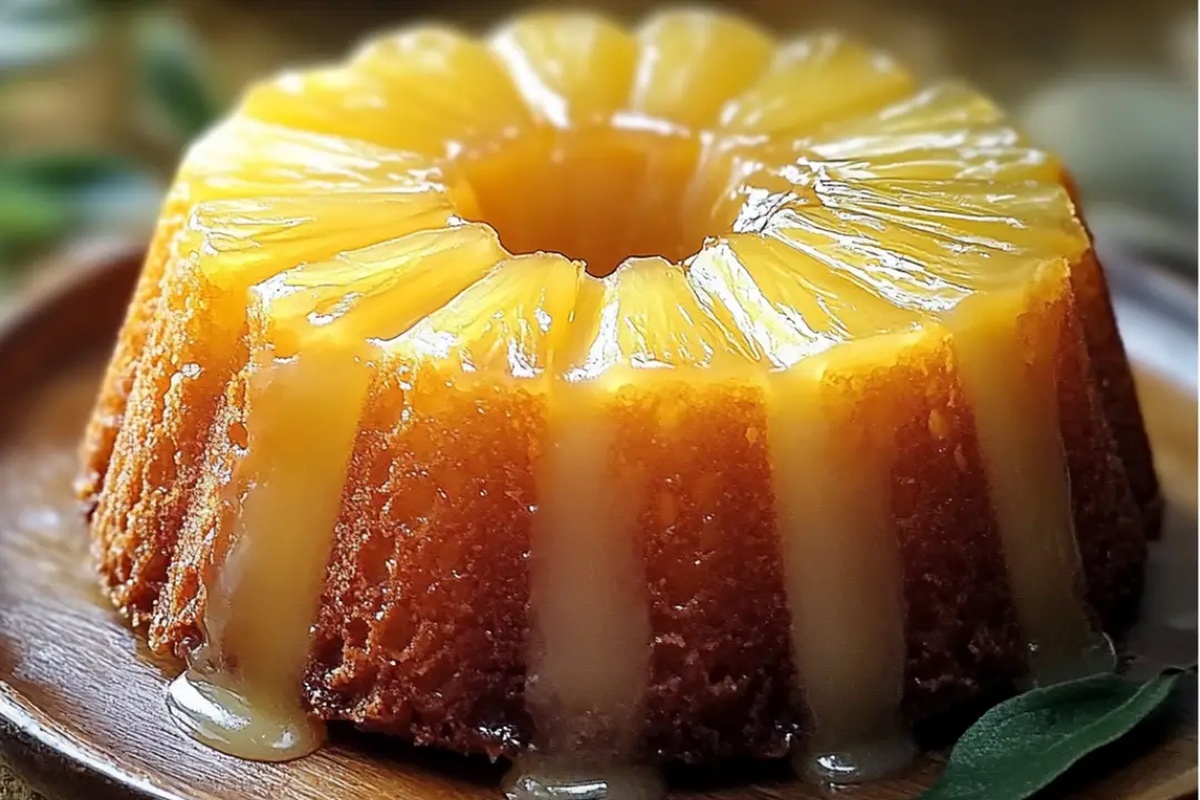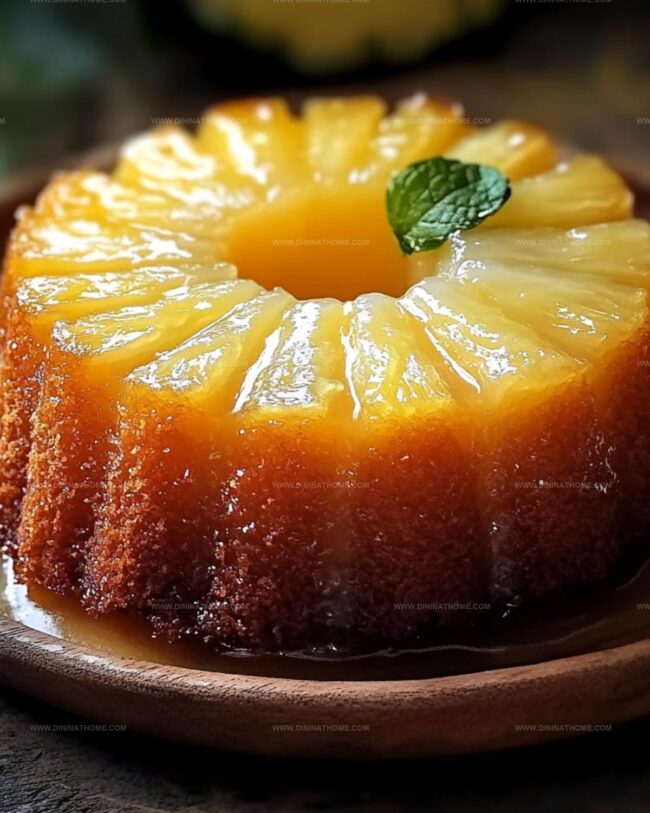Sunshine Sweet Pineapple Juice Cake Recipe for Tropical Bliss
Whipping up a delectable pineapple juice cake promises pure tropical delight.
Sweet tropical notes dance through every bite of this moist creation.
Bakers adore how simple ingredients combine into something magical.
Fresh ingredients unlock incredible flavor profiles that surprise and charm.
Tropical essence infuses each crumb with sunny, bright character.
Home kitchens can easily transform ordinary ingredients into extraordinary desserts.
Crafting this cake will transport you straight to island paradise.
Pineapple Juice Cake People Love For Its Tropical Sweetness
Pineapple Juice Cake – Full Ingredient List
Cake Base Ingredients:Dry Ingredients:Liquid Ingredients:Pineapple Juice Cake Instructions with Citrus Flavor
Step 1: Warm Up the Oven
Fire up your oven to 350°F (175°C).
Grab a bundt pan or round cake pans and give them a quick coat of grease and flour to prevent sticking.
Step 2: Cream Butter and Sugar
In a spacious mixing bowl, whip the butter and sugar together until they become light and fluffy.
Add eggs one by one, blending thoroughly after each addition.
Pour in the vanilla extract and mix well.
Step 3: Combine Dry Ingredients
In a separate bowl, whisk together these ingredients:Step 4: Blend Wet and Dry Mixtures
Slowly incorporate the dry ingredients into the butter mixture.
Alternate adding pineapple juice and buttermilk, stirring until the batter looks smooth and silky.
Step 5: Bake to Perfection
Transfer the batter into your prepared pan.
Slide it into the preheated oven and bake for 40-45 minutes.
Check doneness by inserting a toothpick – it should come out clean.
Let the cake rest in the pan for 10 minutes, then move to a wire rack for complete cooling.
Step 6: Whip Up the Glaze
Create a luscious glaze by whisking together:Stir until the mixture becomes glossy and smooth.
Step 7: Drizzle and Decorate
Once the cake has cooled completely, generously pour the glaze over the top, allowing it to cascade down the sides in delicious rivulets.
Pineapple Cake Tips with Juice-Soaked Perfection
Save Pineapple Juice Cake for Later
What to Serve with Pineapple Juice Cake
Pineapple Cake Style Options
FAQs
Yes, fresh pineapple juice works perfectly. Just ensure it’s pure juice without added sugars for the best cake flavor.
You can easily make a buttermilk substitute by mixing regular milk with a tablespoon of white vinegar or lemon juice. Let it sit for 5 minutes before using.
Insert a toothpick into the center of the cake. If it comes out clean with no wet batter, the cake is done. The top should also be golden brown and slightly springy to touch.
Absolutely! You can bake the cake a day ahead and store it at room temperature. Just add the glaze right before serving to keep it fresh and looking beautiful.
Print
Pineapple Juice Cake Recipe
- Total Time: 1 hour
- Yield: 12 1x
Description
Sweet southern charm meets tropical delight in this Pineapple Juice Cake, where moist layers mingle with tangy pineapple essence. Creamy frosting and juicy fruit notes create a perfect dessert companion that will tantalize your taste buds with each delectable slice.
Ingredients
Main Ingredients:
- 4 large eggs
- 1 cup unsalted butter (softened)
- 1/2 cup pineapple juice
- 1/2 cup buttermilk
- 2 cups granulated sugar
Dry Ingredients:
- 2 1/2 cups all-purpose flour
- 1 teaspoon baking powder
- 1 teaspoon baking soda
- 1/2 teaspoon salt
Glaze Ingredients:
- 1 1/2 cups powdered sugar
- 1/4 cup pineapple juice
- 1 teaspoon vanilla extract
Instructions
- Heat the oven to 350°F (175°C), ensuring the rack is positioned in the center. Thoroughly coat a bundt pan with butter and dust with flour to prevent sticking.
- Cream softened butter and sugar in a large mixing bowl until light and fluffy. Incorporate eggs individually, beating thoroughly after each addition. Blend in vanilla extract until the mixture is smooth and uniform.
- Sift together flour, baking powder, baking soda, and salt in a separate bowl to eliminate potential lumps and ensure even distribution of leavening agents.
- Alternate adding dry ingredients and liquid components (pineapple juice and buttermilk) into the butter mixture. Gently fold until a uniform batter forms, being careful not to overmix.
- Transfer the batter into the prepared pan, spreading evenly with a spatula. Place in the preheated oven and bake for 40-45 minutes, checking doneness by inserting a toothpick that should emerge clean.
- Allow the cake to rest in the pan for 10 minutes, which helps prevent breaking. Carefully invert onto a wire cooling rack, letting it cool completely.
- Prepare the glaze by whisking powdered sugar, pineapple juice, and vanilla extract until silky and free of lumps. Once the cake has reached room temperature, drizzle the glaze over the top, allowing it to cascade naturally down the sides.
Notes
- Swap buttermilk with plant-based milk for a dairy-free version that maintains moisture and tender crumb.
- Use gluten-free flour blend to make this recipe completely gluten-free without compromising the cake’s texture.
- Enhance tropical flavor by adding shredded coconut to the batter or sprinkling on top of the glaze for extra crunch and dimension.
- Reduce sugar content by substituting half the sugar with unsweetened applesauce or mashed ripe bananas to create a healthier alternative.
- Prep Time: 20 minutes
- Cook Time: 40 minutes
- Category: Desserts
- Method: Baking
- Cuisine: American
Nutrition
- Serving Size: 12
- Calories: 401
- Sugar: 40 g
- Sodium: 214 mg
- Fat: 19 g
- Saturated Fat: 12 g
- Unsaturated Fat: 7 g
- Trans Fat: 0 g
- Carbohydrates: 53 g
- Fiber: 1 g
- Protein: 5 g
- Cholesterol: 83 mg





James Walker
Lead Recipe Developer & Culinary Educator
Expertise
Southern Cuisine & Farm-to-Table Cooking, Recipe Development & Testing, Culinary Education & Instruction
Education
School: Auguste Escoffier School of Culinary Arts
Program: Diploma in Culinary Arts and Operations
Focus: Comprehensive training in classical and modern culinary techniques, kitchen operations, and farm-to-table practices.
James didn’t learn cooking from a TV show, he learned it from busy kitchens, family gatherings, and long afternoons spent testing recipes the hard way.
After training at the Auguste Escoffier School of Culinary Arts, he brought his love for real, down-to-earth food to every dish he makes.
At Dining At Home, James loves building recipes that feel familiar but still have something special, like adding a twist to a classic or making a slow Sunday dinner feel brand new.
When he’s not in the kitchen, you’ll probably find him swapping garden tips at the farmers’ market or teaching his daughter how to flip pancakes without a mess (almost).